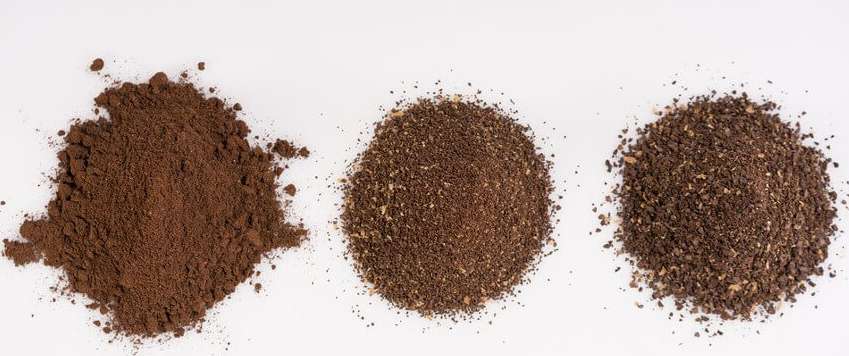
Cold brew coffee, known for its smooth and sweet profile, is a popular choice for coffee enthusiasts seeking a less acidic and refreshing alternative to traditional hot brewing methods. Unlike hot coffee, cold brew is made by steeping coarsely ground coffee beans in cold water for an extended period, usually 12 to 24 hours.
This process extracts a different chemical profile from the beans, resulting in a unique flavor. And yes, while you can use regular ground coffee for cold brew, opting for a coarser grind is generally recommended to avoid over-extraction and bitterness, ensuring the best possible taste.
Key Takeaways
- Regular ground coffee can be used for cold brew, but be aware it may lead to over-extraction and a bitter taste.
- Coarse ground coffee is preferred to avoid over-extraction, providing a smoother and more pleasant taste.
- Adjust steeping time when using finer grounds to control extraction and achieve the desired strength.
- Explore the impacts of different coffee grounds (medium, fine, superfine) on the flavor of your cold brew.
- Brewing tips for fine ground coffee include careful water ratio management and filtration to mitigate common brewing challenges.
Understanding Coffee Grinds
Diving into the world of coffee grinds, we find a variety that can significantly affect the taste of our cold brew. From medium to superfine, each grind size offers something different:
- Medium Grind: Resembling rough beach sand, this grind is versatile but not ideal for cold brew, where extraction happens slowly.
- Medium-Fine Grind: Slightly finer than medium, this grind is common for pre-ground options and can work for cold brew with adjusted brewing times.
- Fine Grind: Smooth and powdery, typically used for espresso. For cold brew, it requires careful attention to avoid over-extraction.
- Superfine Grind: Similar to flour, best suited for Turkish coffee, and not recommended for cold brew due to its propensity for quick, intense extraction.
Tips for Brewing with Fine Ground Coffee:
- Consider a shorter steeping time to prevent over-extraction, aiming for less than 12 hours.
- Use a finer mesh filter or several layers of cheesecloth to prevent fine grounds from slipping through into your brew.
- Start with a lower coffee-to-water ratio and adjust based on taste preferences, as fine grounds have a larger surface area and can lead to a stronger brew more quickly.
The Perfect Grind for Cold Brew
For cold brew aficionados, the grind is more than just a step in preparation—it’s a key to unlocking the smooth, rich flavors that define this refreshing coffee method. Coarse grind, akin to sea salt in texture, is the gold standard for cold brew for good reasons. Its larger particle size allows water to flow freely, ensuring thorough extraction without pulling out the bitter compounds often associated with over-extraction. This results in a coffee that’s smooth, not just in flavor, but in body, allowing the subtle nuances of your chosen beans to shine through.
Why coarse, though? Well, it’s all about the extraction process. Cold water extracts flavors more slowly than hot water, requiring a longer steeping time. A coarse grind ensures that the extraction process is gradual and even, preventing the water from pulling out unwanted bitter and acidic flavors. This gentle method highlights the coffee’s natural sweetness and can even bring forward chocolatey or fruity notes that hot water might overshadow.
Cold Brew Coffee Ratios and Techniques
The magic of cold brew lies not just in the grind but in the ratio of coffee to water. The ideal ratio can vary depending on personal taste, but a good starting point is 1:8—one part coffee to eight parts water. This creates a well-balanced concentrate that can be enjoyed as-is or diluted with water or milk to preference.
To make cold brew with regular ground coffee, start by mixing your coffee and water in a large jar or pitcher. If you’re using a finer grind than recommended, you might want to shorten the steeping time to between 12 and 18 hours to prevent over-extraction, tasting as you go to find the sweet spot.
Filtering is crucial, especially with finer grinds that can slip through coarser filters. A fine-mesh sieve lined with cheesecloth or a paper coffee filter works wonders, ensuring a sediment-free brew. Remember, the beauty of cold brew is in its versatility and forgiveness; experimentation is encouraged to tailor the strength and flavor to your liking.
Alternative Options and Experimentation
Exploring different types of coffee like single-origin, dark roast, and flavored varieties can significantly impact your cold brew experience. Single-origin coffees bring unique flavors reflective of their specific growing region, offering a special tasting experience.
Dark roasts provide a bold, robust taste that can stand up to the cold brew process, giving your coffee a rich, intense flavor. Flavored coffees can add an exciting twist, infusing your cold brew with hints of vanilla, caramel, or other delightful tastes. Don’t hesitate to experiment with various coffee beans and brewing methods to discover your perfect cold brew match.
FAQs
What is the difference between cold brew coffee grounds and regular coffee grounds? Cold brew coffee grounds are typically coarser than regular coffee grounds, optimizing flavor extraction over a long steeping period without over-extraction.
What is the ratio of coffee to water for cold brew? A common starting ratio is 1:8, one part coffee to eight parts water, for a balanced concentrate. Adjust to taste, going stronger or lighter as preferred.
How long does homemade cold brew last? Homemade cold brew can last up to two weeks in the fridge, though its peak flavor is best enjoyed within the first week.
Why does cold brew taste better? Cold brew often tastes smoother and sweeter than hot coffee due to its slow extraction process, which reduces bitterness and acidity.
Can you brew coffee with whole beans? Yes, you can brew coffee with whole beans, but it’s less common and requires a longer brewing time to extract flavor adequately.
Should I steep cold brew in the fridge or at room temperature? Steeping can be done either at room temperature or in the fridge, though room temperature steeping is more common and may enhance flavor extraction.
Final Thoughts
Diving into the world of cold brew coffee opens up a realm of possibilities, from using regular ground coffee to exploring various coffee types and brewing methods. Remember, the perfect cold brew is subjective and can be achieved through experimentation with grind sizes, steeping times, and coffee-to-water ratios. So go ahead, mix it up, and find your cold brew sweet spot. Your ideal cup is waiting to be discovered.









